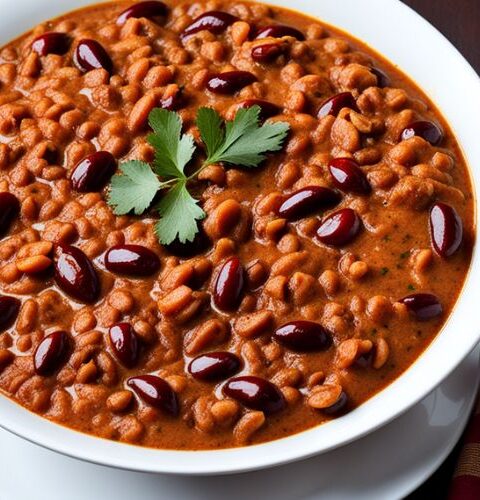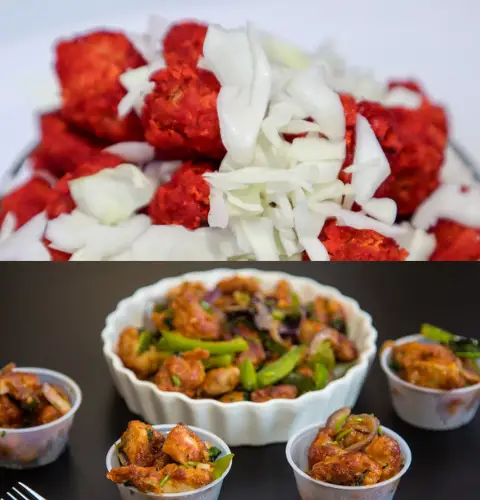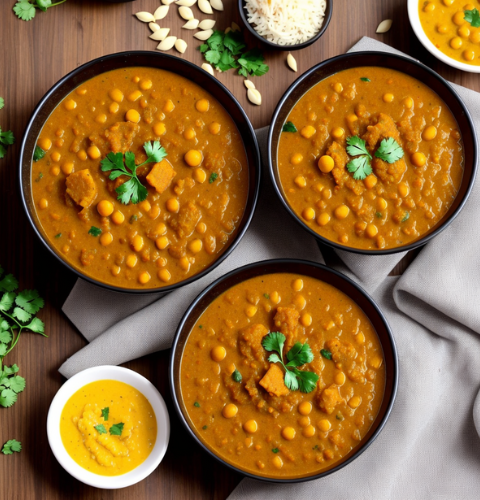What is tandoori?
The fragrant smell of flavors, the sizzle of marinated meat, and the smoky hug of the oven stove—these are the captivating components that meet up to make the charming universe of roasted cooking. Starting from the Indian subcontinent, roasted dishes have crossed boundaries to become worldwide top picks, enrapturing palates with their rich flavors and fragrant profiles. In this culinary excursion, we will dig deeply into the set of experiences, methods, and different exhibits of baked delights that have left a permanent imprint on the universe of gastronomy.

-
History: Antiquated Beginnings of Oven
Roasted food has its underlying foundations in antiquated times, with the oven broiler at the core of its creation. “Oven” itself is derived from the Persian word “tannur,” and that implies fire. Authentic proof recommends that the oven has been in need for more than 5,000 years, with its beginnings in the Harappan culture of the Indian subcontinent.
An oven is a tube-shaped dirt stove, customarily filled with charcoal or wood. Its plan considers high-temperature cooking, making it ideal for simmering, baking, and barbecuing. Throughout the long term, various societies have taken on the oven, each adding their own extraordinary touch to the culinary practice.
-
The specialty of baked marination
At the core of roasted food lies the specialty of marination. The way into the particular taste of baked dishes lies in the cautious choice and equilibrium of flavors utilized in the marinade. Curd, ginger, garlic, cumin, coriander, turmeric, and garam masala are a couple of fundamental fixings that add to the mind-boggling flavor profile of roasted dishes.
Meat, vegetables, and paneer (Indian curds) are likewise washed in this delightful combination, permitting the fixings to retain their flavors and become delicate, making a delicious and fragrant dish. The marination cycle isn’t just about flavor imbuement; in addition, it fills the down-to-earth need of guaranteeing that the meat stays clammy while cooking at high temperatures in the oven.
-
Tandoori Past Boundaries: Worldwide Impact
While baked cooking has its underlying foundations in the Indian subcontinent, it has crossed borders and caught the hearts (and taste buds) of foodies all over the planet. The worldwide allure of roasted dishes is credited to their strong flavors, lively varieties, and the tempting fragrance exuding from the oven.
From the clamoring roads of Delhi to the stylish cafés of New York, roasted dishes have tracked down a spot on different menus to suit nearby preferences and inclinations. The worldwide combination of flavors has led to imaginative roasted manifestations, for example, baked pizza, roasted wraps, and even roasted imbued mixed drinks, exhibiting the flexibility of this old cooking strategy.
Tandoori Works of art: Past Chicken Tikka
While chicken tikka might be the perfect example of roasted cooking, the collection of baked dishes reaches out a long way past this cherished work of art. How about we investigate some notable baked delights that have become staples in both conventional and contemporary settings?
-
Tandoori Chicken:

Succulent bits of chicken marinated in a combination of curd and flavors were singed flawlessly in the oven. The outcome is a smoky, delightful dish with firm edges and a delicious inside.
-
Sikh Kebabs:

Ground meat, frequently sheep or chicken, blended with flavors and spices, is formed onto a stick and cooked in an oven. The round and hollow shape and singed outside give the Sikh kebab a particular look and taste.
-
Tandoori Paneer:

A vegan charm highlighting marinated paneer shapes barbecued in an oven. The smokiness of the oven adds profundity to the gentle kind of paneer, making an amicable mix of surface and flavor
-
Tandoori Roti:

A staple of roasted food, this unleavened bread is heated in an oven. Its marginally burned exterior and delicate interior make it the ideal vessel to appreciate baked dishes.
Tandoori Oven’s Cutting edge Makeover: A Contemporary Wind
As baked food keeps on developing, cooks all over the planet are putting their own twist on conventional dishes, making current translations that push the limits of taste and presentation. A few striking models include:
-
Tandoori Salmon:
A combination of societies where the rich, smoky kinds of baked goods meet the rich delicacy of salmon. The outcome is a dish that weds the most ideal scenario, enchanting fish darlings and baked sweethearts alike.
-
Tandoori Pizza:

The exemplary Italian pizza gets a roasted makeover with firm, roasted, prepared outside, and baked-flavored garnishes. It is a culinary combination that exhibits the flexibility of roasted methods.
-
Tandoori Tofu Sticks:

Fulfilling the developing interest in plant-based choices, baked tofu sticks offer a delectable and protein-rich alternative. The oven gives tofu a magnificent smokiness, making it famous even among non-veggie lovers.
Dominating Tandoori Oven: Workmanship and Procedure
In the background of each and every perfect baked dish is a gifted oven gourmet specialist who has excelled at working with this remarkable broiler. The cooking system requires accuracy and timing with the goal that the meat is cooked flawlessly—burned outwardly, sodden within.
The high temperature of the oven (frequently coming to 900 °F or more) guarantees quick cooking, bringing about tasty, smoky, and scorched outsides. This procedure includes spearing the marinated meat, setting it inside the oven, and cooking it. Mastery lies in estimating heat, figuring out fixings, and timing each dish to achieve the ideal surface and flavor.
-
Tandoori and Wellbeing: A Scrumptious Yet Nutritious Choice
As opposed to the misguided judgment that all Indian food is weighty and calorie-heavy, baked dishes offer a solid other option. Utilizing yogurt-based marinades, lean meats, and sweet-smelling flavors adds flavor as well as a healthy benefit.
The cooking technique itself, with its fast burning at high temperatures, holds the meat’s normal juices, diminishing the requirement for excess fat or oil. Moreover, the consideration of different flavors in roasted dishes brings flavor as well as potential medical advantages, as many flavors are known for their cancer prevention and mitigating properties.
-
The Tandoori Insight: From Road Food to Top-Note Food
Baked food rises above culinary limits, finding its place in both humble road slows down and very good quality, high-end foundations. The experience of getting a charge out of baked dishes isn’t just about the flavors; it’s a multisensory venture that incorporates the visual allure of roasted edges, the tempting smell that consumes the space, and the material joy of attacking an impeccably cooked slice of meat or bread.
In clamoring markets, road merchants skillfully work shoddy baking, producing a constant flow of roasted, charming, enthusiastic clients. At the opposite end of the range, high-end cafés offer an organized baked encounter, where cooks push the limits of imagination to introduce roasted dishes as culinary show-stoppers.
-
Tandoori and social festivals
Tandur cooking isn’t just about the food; it is profoundly embedded in social festivals and ceremonies. From happy events to family social occasions, baked dishes assume a focal part in the culinary scene of the Indian subcontinent.
Roasted feasts are a typical sight during weddings, where huge amounts of marinated meat are ready and cooked in enormous ovens to take care of a get-together of hundreds. The public part of sharing baked dishes unites individuals, creating a feeling of warmth and association.
-
Tandoori: A Culinary Diplomat
Tandur food keeps on acquiring prominence around the world, filling in as a culinary representative and acquainting a worldwide crowd with the rich and fluctuating embroidery of Indian flavors. Past their gastronomic allure, roasted dishes span social holes, encouraging an enthusiasm for customs and methods that went down through the ages.
Whether delighted in the thin paths of Old Delhi, the lively marketplaces of Mumbai, or the top-of-the-line eateries of London, roasted dishes have a widespread allure that rises above boundaries and unites individuals through a common love of good food.
-
tasteLean Proteins:
Tandoori dishes often contain lean proteins such as chicken, fish, and cheese, ensuring a high protein intake without the added saturated fat.This is an optimal decision for those looking for a harmony between taste and sustenance.
-
Yogurt-Based Marinades:
Using yogurt-based marinades not only enhances the flavor but also adds a dose of probiotics and calcium to the dish. These ingredients promote gut health and contribute to maintaining strong bones.
-
Abundance of spices:
Numerous spices used in tandoori marination go beyond taste. Many flavors, like turmeric, cumin, and coriander, are known for their calming and cancer prevention agent properties, which support large-scale prosperity.
Tandoori in a weight-conscious lifestyle:
-
Calorie Conscious:
Tandoori cooking involves minimal use of oil and fat, making it a calorie-conscious choice for those watching their weight. The absence of deep-frying ensures that the natural goodness of the ingredients is preserved.
-
High fiber content:
Accompaniments like tandoori roti and naan provide a good source of dietary fiber. Fiber aids digestion, promotes feelings of fullness, and contributes to weight management.
-
Heart Health and Tandoori Cuisine
-
Low-saturated fat:
Tandoori cooking relies on the high heat of the tandoor for the cooking process, which reduces the need for excess fat. This makes for recipes that are low in soaked fat, which adds to heart wellbeing.
-
Omega-3 fatty acids from fish:
Rich in omega-3 fatty acids, tandoori fish dishes offer heart-healthy benefits. This essential fat is associated with a reduced risk of cardiovascular disease.
Tandoori for a diabetic-friendly diet
Controlled Glycemic Index:
Tandoori dishes, especially those featuring whole wheat options like tandoori roti, have a low glycemic index. These help with better blood sugar control, making them suitable for a diabetes-friendly diet.
-
Balanced Macronutrients:
A tandoori meal’s balanced combination of protein, carbohydrates, and fat provides sustained energy without spiking blood sugar levels.
The Mind-Body Connection: Tandoori and Mental Well-Being
-
Sensory Satisfaction:
The aromatic spices and flavors in tandoori dishes stimulate the senses, providing a satisfying and enjoyable eating experience that contributes to mental well-being.
-
Social Connection:
Tandoori cuisine, often shared in communal settings, fosters social bonds and connections. The act of sharing a delicious and nutritious meal enhances the overall sense of well-being.
Conclusion An immortal culinary heritage
All in all, the universe of roasted food is a rich embroidery woven with strings of history, flavor, and social importance. From their antiquated beginnings in the Indian subcontinent to their worldwide presence today, baked dishes have advanced and adjusted, captivating food sweethearts all over the planet.
As we relish the smoky fragrance and enjoy the flavors that baked dishes bring to the table, we are not simply participating in the food; we are submerging ourselves in a culinary legacy that has endured over the extreme long haul. Thus, the following time you enjoy a piece of impeccably barbecued roasted chicken or a newly prepared baked roti, remember that you’re not simply tasting the food; you are encountering the pith of an immortal culinary practice.







[…] hot with naan or […]
[…] Tandoori Experience: A Balanced of Spice and Smoke Wholesome Indulgence: The 10-Step Guide to Paneer Makhani Excellence […]